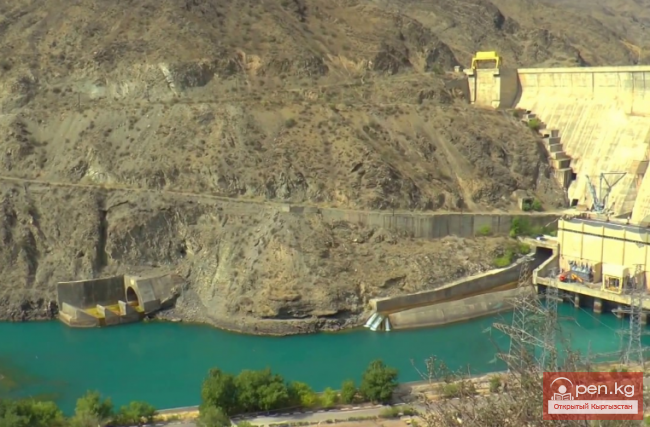Silver Crucian Carp -- Carassius auratus gibelio
This species has been artificially bred in the water bodies of Kyrgyzstan and southern Kazakhstan. For instance, in Lake Issyk-Kul, the silver crucian carp was introduced in 1963 in a quantity of several specimens along with carp fry from the Frunze pond economy, where it had arrived with carp stocking material in 1954 from the Almaty pond economy. In the lakes of Biilikol and Akkol (Talas River basin), the silver crucian carp was relocated in 1960 from the ponds of the Lugovaya station.
The crucian carp is the most unpretentious and resilient fish. It can live in water bodies where other fish cannot survive. According to the famous ichthyologist of the 19th century and expert in amateur fishing, Sabaneev, the crucian carp can successfully hibernate in shallow freezing lakes by burrowing into the silt.
The natural distribution area of the silver crucian carp includes freshwater bodies along the Pacific coast and the Amur River basin. To date, it has been widely spread by humans beyond its natural range.
Externally, the silver crucian carp is quite similar to the common crucian carp, differing from the latter by a somewhat elongated body shape. The scales are large and closely fitting. The notch in the tail fin of the silver crucian carp is larger than that of the common crucian carp.
The sides and belly are silvery, while the abdomen is dark, almost black in color.
It is found in the water bodies of our river basins, in lakes, and reservoirs. It leads a bottom-dwelling lifestyle, preferring well-warmed shallow areas.
In the populations of the silver crucian carp, a special form of reproduction and development of fish is observed — gynogenesis — from the Greek gyne (woman) and genesis (origin, emergence).
Gynogenesis is characterized by the fact that after the sperm penetrates the egg, their nuclei do not fuse, and only the nucleus of the egg participates in the further development of the embryo. In gynogenesis, the offspring consists only of females, and the eggs are fertilized by sperm from closely related species: common carp, roach, common crucian carp, tench, and loach.
Interestingly, the future offspring inherit the traits only from the original, i.e., maternal, form of the silver crucian carp.
The crucian carp usually reaches sexual maturity by the third year of life (at a length of 15-16 cm), but there are cases when two-year-olds measuring 8-12 cm have mature eggs. Spawning is done in portions, so the spawning period of this fish in the ponds of the Chui Valley lasts with breaks from April to July. The fecundity of female silver crucian carp weighing from 30 to 450 g ranged from 22,000 to 158,000 eggs, and the number of small eggs increases with the age of the females by about 1.5-2 times. They lay eggs on underwater vegetation.
The silver crucian carp primarily feeds on zooplankton, but filamentous algae (muck) and bottom invertebrates also play a significant role in its diet. Similar to the tench, it avoids open areas of the water body and stays among thickets with soft muddy bottoms, sometimes burying itself almost completely in the muck while searching for food. The crucian carp grows slower than the common carp and the carp, but by the 2nd or 3rd year of life, it reaches marketable weight, as evidenced by the data on the growth of silver crucian carp from various water bodies presented below.
Fish farmers have long noted the good growth and excellent taste qualities of silver crucian carp meat and have started breeding it in ponds alongside carp as a supplementary fish.
The silver crucian carp is characterized by remarkable plasticity and is the ancestor of numerous modern breeds of goldfish.
Fish














































